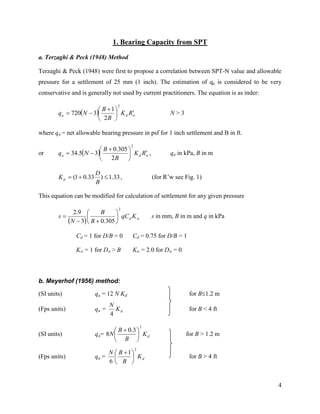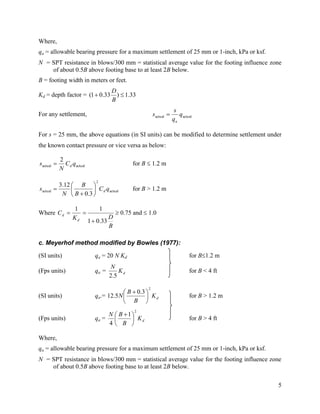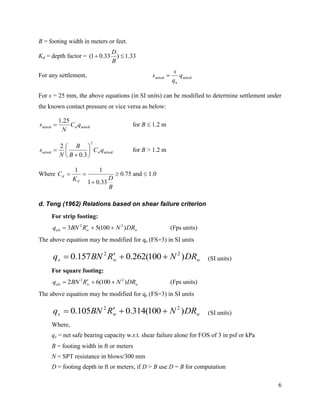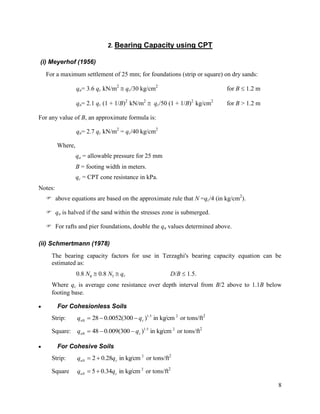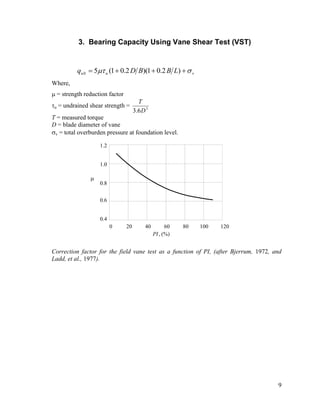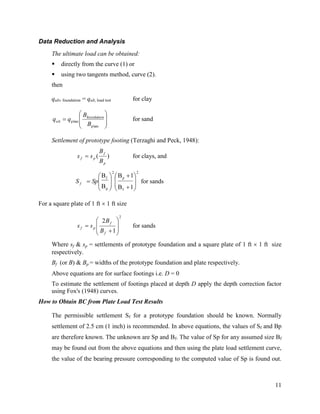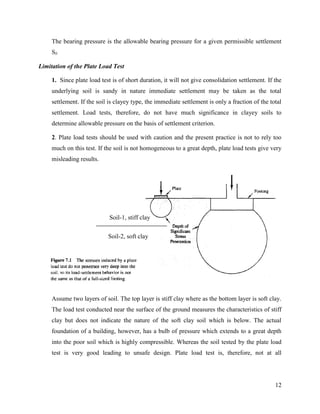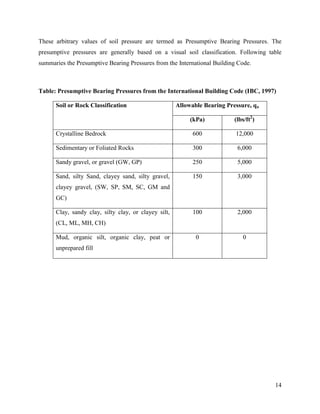This document discusses methods for estimating bearing capacity based on in-situ and laboratory tests. The most common in-situ tests are the Standard Penetration Test (SPT) and Cone Penetration Test (CPT). The SPT involves dropping a weight to penetrate a split spoon sampler and counting the number of blows, which is used to estimate bearing capacity based on empirical correlations. The CPT provides a continuous profile by measuring cone resistance, which can also be empirically correlated to bearing capacity. The document also discusses estimating bearing capacity from vane shear tests and plate load tests.



